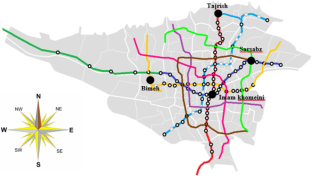Particulate matter concentrations and characterization in urban subway system-case study Tehran, Iran
Abstract
Abstract
The present work aims to evaluate the indoor and outdoor air quality in the stations of the Tehran subway system. In this study, the particulate sampling of the four Tehran subway stations was conducted in March-July 2018 during different seasons to determine indoor and outdoor PM10 and PM2.5 concentrations and elemental composition. The samples were analyzed to determine 11 elements such as Pb(Lead), Cd(Cadmium), Ni(Nickel), Co(Cobalt), Mn(Manganese), Zn(Zink), Fe(Iron), Cu(Copper), As(Arsenic), Al(Aluminum) and Cr(Chromium) qualitatively. The experimental results indicated that the average concentrations of both PM10 and PM2.5 in indoor stations (platforms) were approximately 2–5 times higher than those in the outdoors (ambient air). In addition, PM10 and PM2.5 concentrations exceeded the daily-standard values (US-EPA; PM10 = 50 µg.m-3, PM2.5 = 25 µg.m-3) in 100% indoor measurements and 84% outdoor measurements. Moreover, the average indoor PM10 and PM2.5 concentrations in weekday values were 1.4 and 1.5 times higher than those measured on weekends, which may be related to the lower frequency of trains. Further, indoor and outdoor correlation of PM10 concentrations (Pearson r = 0.6) was more than that of PM2.5 concentrations (Pearson r = 0.2), indicating the additional sources for PM2.5 in indoor stations. Additionally, the average PM2.5 / PM10 ratio was 0.52 for indoor measurements and 0.34 for outdoors, indicating that PM10 particles were the dominant particle type in both sampling areas and passengers in indoor stations exposed to higher PM2.5 concentrations than those in outdoor stations. Finally, based on elemental analysis, Fe was the most enriched element in indoor and outdoor PM10 and PM2.5 samples. The concentration of Fe ranged from 16 to 81 µg.m-3 in indoor stations and 0.6 to 2.5 µg.m-3 in outdoors. Other enriched elements were Al, Cu, Zn, and Mn, respectively.


 求助内容:
求助内容: 应助结果提醒方式:
应助结果提醒方式:


